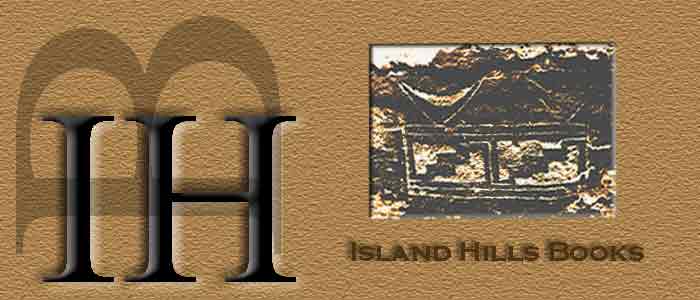 |
DICK BAKKEN
Borne to Columbine
My parents are both from South Dakota. I was born in eastern Montana in 1941 and grew up through the 40s always moving west through that wild-horse country, then through the 50s and bucking birth of rock-and-roll in the horse-plowed farmland of the great Spokane River Valley in Washington. My people, like most, read Life, Look, Saturday Evening Post, and Readers Digest, so that's what I read, along with comic books, especially The Lone Ranger. My mom's wilder sister was an artist. So as a child I made my mark sketching, painting, and sculpting.
The summer I turned twelve, I got my sisters, a couple of the Zolman brothers, and a swimming pool pal to present a Sunday afternoon festival of farces with me. I wrote all the scenarios and directed my sidekicks through relentless rehearsals. We even made bags of popcorn and a big jug of grape Kool-Aid to sell to our living room crowded with neighbors, parents, grandparents, and cousins. At the door my sister too small to memorize lines sold tickets we had printed with that swimming pal's rubber stamp kit, a wooden block with four slots you could wedge wiggly letters into with tweezers. I was so taken, I traded something for that kit, and began printing a one-page weekly newspaper four-lines-at-a-time and knocking on doors. "Want to buy a penny paper?"
By sophomore year at big old brick West Valley High School, I had gone through stamp kit, two little rotary presses, a year of my Weekly Breeze, a summer of my Tri-Monthly News, a year of my national rag for other kids like me, The Printer, and moved on to writing science fiction short stories. That's when my English teacher, a classroom buddy, and I started the first-ever literary magazine at the school—Eagle Echoes—still thriving now fifty years later. The night before our debut issue, a staffer suddenly cried out that page 3 was 13 lines short. Someone had miscounted the mimeo mock-up, it was 11th hour, and the editorial room plunged into panic. I blurted, "I'll write a poem!" A few months later, I was publishing poems, stories, and artwork in Altissimo Catamount, the same national magazine in which schoolboy Roger Ebert was publishing sci-fi criticism and young Clarence Major—now a top American black novelist—publishing poems.
I continued painting and poetry through college, left sci-fi and stories behind, and finally—after a huge visionary catharsis of sobbing, laughing, and coughing—mathematics and physics too. As a teaching assistant M.A. candidate in English at Washington State University, just married, I was well liked but had this one rudely disrupting charge who kept infuriating his classmates and ruining my presentations. One night after dinner chat with my newly impregnated wife, I opened a knock on the door to see my big problem standing there. "You want to start a mimeo mag?" I wasn't sure what he meant but let him in as my chance to connect. As fast friends we published five years of an influential international literary magazine under our banner Salted Feathers, including a double issue of a coterie of Bengalis arrested in Calcutta, charged with publishing "pornography," such as the poem "Stark Electric Jesus" by their leader Malay Roy Choudhury.
After two children, divorce, just a few years in front of English and writing students, having achieved an Assistant Professor promotion and tenure early, I walked into the department office to resign. When the chairman handed me the required form, "Note to the Institution," I took it home and filled it out as a poem. This spring 1970 manifesto—penned and passed out during a nation-wide Strike as the war machine moved to quash dissident youngsters and faculty actively opposing U.S. military aggression in Indochina and Kent State to Jackson State—got picked up by the underground press network, heralded far and wide, published I don't know where all.
Then—after a quarter century as fully committed poet—I was invited to write a weekly poetry column way down on the Mexican border for our brand new Bisbee News in Arizona. To further my writing skills, exercise my vision, and make extra dollars, I began publishing occasional, controversial social commentary in that paper: a three-part piece during the Clinton impeachment proceedings, volatile views on O.J. Simpson and JonBennet Ramsey murder cases, and a severe yuletide defamation of Santa Claus. It was during this five-year run of the Bisbee News that I created my four-part penetration of the April 20, 1999, Columbine High School massacre, just two months after it happened. For four or five years I continued to research our ongoing shocking national phenomenon of rampage shootings, gradually revising and adding key details to my essay—such as that the news of Custer's utter demise reached Helena, and thus the rest of the United States, during the wildly exuberant joy of 4th of July celebrations of our Centennial!
Now, almost exactly eight years later, we are lost in new shock of the April 16, 2007, Virginia Tech massacre, and Gary David has asked to publish—first time anywhere in its full revised version—my essay on Columbine and the rampage phenomenon, in his Island Hills online chapbook series. I have thought long and hard while re-reading my essay a couple times—and do not discover anything new that I need to add to it. That is, this essay is my full comment on Columbine, Virginia Tech, and everything before and between. I wept during these re-readings.
Dick Bakken, Sunday May 6, 2007
E-mail: dickbakken@yahoo.com
You can go HOME again.